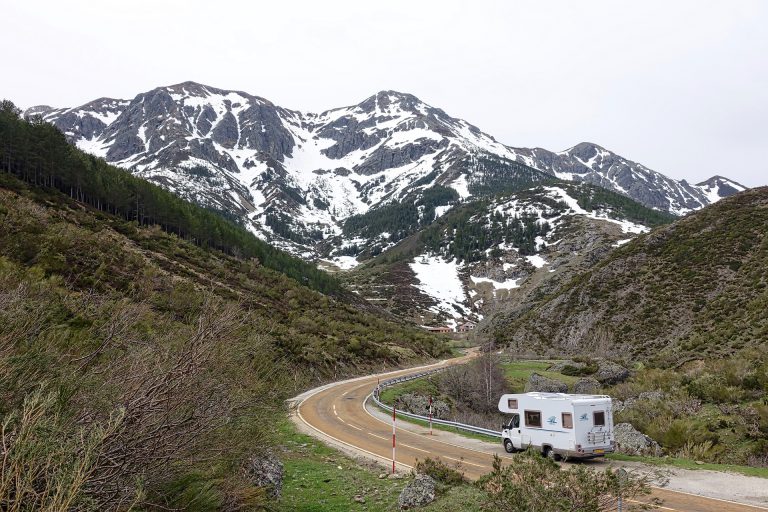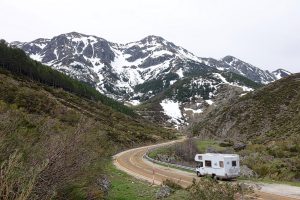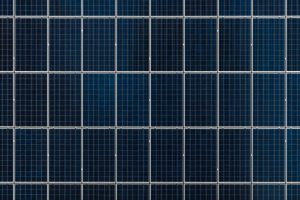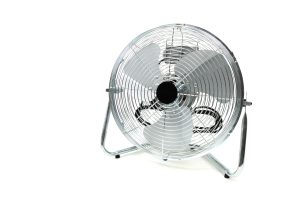
Most RV owners never really use their RV to its full potential. For instance, very few campers ever make it out on a dry camping trip. This is unfortunate because dry camping (also known as boondocking) is one of the coolest experiences a travel trailer or motorhome can offer.
Are you wondering, What is dry camping with an RV? Do you want to know how you can get in on this super fun pastime? If so, this is the article for you. Here we will discuss what boondocking is and exactly how to stock your RV for your very first dry camping adventure.

What is Dry Camping?
Let’s first address the most important question: What is dry camping? Dry camping is camping in an RV without power or water hookups. This is typically done on government-owned land, but some private properties also allow boondocking.
As you might imagine, camping without any sort of outside hookups can be a bit of a challenge. Luckily, with a bit of preparation, you shouldn’t have any trouble at all. Use the RV dry camping tips in this article to get ready to go so you can fully enjoy your wilderness adventure.
Importance of a Camping Generator
First and foremost you will want to invest in a generator. If you’ve ever wondered how to keep RV batteries charged while dry camping, or if you’ve asked yourself, “How do you keep the fridge working in an RV when dry camping?”, the answer is a generator.
Running a generator just a couple of hours a day will recharge your RV batteries and keep you off-grid for longer. Moreover, dry camping with an RV generator is much more comfortable than going without, as it allows you to run the air conditioner during the warmest parts of the day.
Some RVs come with generators, while others require you to purchase one separately. That said, considering the fact that you can get a decent generator for a relatively small price, buying one separately if your RV doesn’t include one is definitely a worthwhile investment.

RV Modifications for Dry Camping
The best RV for dry camping is the rig that has had a few modifications made. This is especially true if you plan to do a lot of boondocking.
Below are a few of the most popular modifications you might want to consider. One of our very best RV boondocking tips is to have these mods made before you ever hit the road. You’ll be happy you did!
Solar Panels
Putting solar panels on the roof of your RV—or even just investing in a portable solar panel—can be enormously helpful while boondocking.
In fact, provided you get enough sun during your stay and conserve electricity whenever possible, solar panels may be enough to keep your battery bank charged without ever turning the generator on. This saves on fuel usage (not to mention fuel money), reduces pollution, and keeps noise down.
Composting Toilet
A composting toilet is great because it doesn’t use any fresh water, nor does it fill a waste tank. Instead, all waste is small, contained, and easy to get rid of. Believe it or not, composting toilets actually don’t stink, and can be a great option for those who dry camp regularly.
Vent Fans
If your RV doesn’t have one already, you will want to consider installing at least one roof vent fan. This will allow you to get air moving through the RV without turning on the A/C. Adding a MaxxAir vent cover will allow you to use your roof vent even in rainy weather, making it even more useful.
Battery Upgrade
One of our best RV boondocking battery tips? Replace the battery. Stock RV batteries just aren’t that great and don’t really hold onto a charge very well.
The best RV battery for dry camping is a lithium battery. These batteries may cost a bit more than other types of batteries, but they hold a charge well, charge up quickly, and take a deep discharge. They’re also lightweight, something every RVer will appreciate.

Other Boondocking Essentials
Wondering what other steps you can take to ensure you have the best RV for boondocking? Be sure to stock your rig with the following:
Blue Boy
A blue boy holds on to wastewater and allows you to transport it to a dump station without moving the entire RV. These portable tanks are lifesavers when your rig is difficult to move, you don’t want to give up an awesome spot, or the closest dump station is miles away.
Water Bladder
The best way to add water to an RV when dry camping is an external water bladder. This can be folded and stored in a storage bay when not in use, and can be filled and kept in the bed of a truck until more water is needed in your fresh tank.
Water Pump
Of course, you’ll need a way to get that fresh water from point A to point B. A food-grade water pump can help you out with this.
Portable Propane Heater
While most RV furnaces can be run on propane—making them usable while dry camping—most are very inefficient and waste a lot of fuel. For this reason, we recommend a small, indoor portable propane heater. Just be sure to place it near a cracked window for safety reasons.
Battery Operated Fans
As mentioned before, you will definitely want at least one roof vent. However, battery-operated fans can really help with air flow also. Therefore, you’ll want to invest in at least a couple of these.
Have some dry camping tips of your own? Want to help others stock their boondocking RV? We’d love to hear your tips and tricks in the comments below!






